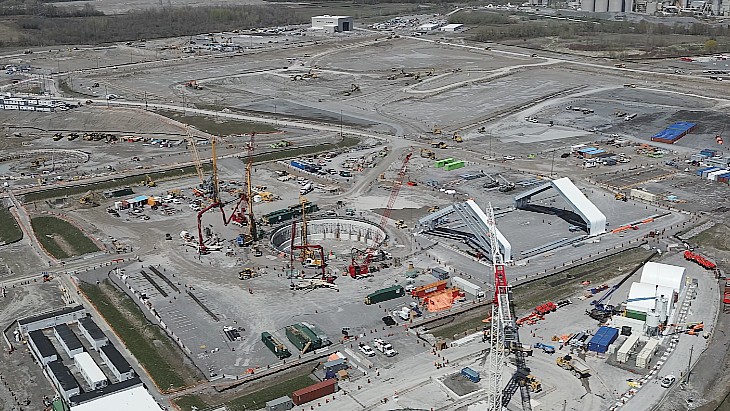US nuclear plants operate through polar vortex
.jpg)
Twelve of Exelon's nuclear power plants are located in the three states which were subjected to extreme conditions. Daytime temperatures in the Philadelphia region dipped to 6° Fahrenheit (-14.4° Celsius) and wind chill factors, at -35°F (-37.2°C), broke a record set in 1948.
"Our nuclear facilities are among the safest and most reliable power plants in the country, and we are dedicated to being online when customers need us most, even in the most frigid weather conditions," Exelon Chief Nuclear Officer Bryan Hanson said. He thanked the thousands of nuclear employees who "braved the freezing cold" to keep Exelon's fleet operating during this period of high demand. Residents in the affected states "shouldn't have to choose between clean energy and reliability - our safe and well-run nuclear facilities deliver both," he said.
The extreme weather event was caused by the polar vortex, a large area of low pressure and cold air surrounding both of the Earth's poles. This area of low pressure and temperature exists all year round, but weakens in summer and strengthens in winter, the US National Oceanic and Atmospheric Administration explains. The term "vortex" refers to the anticlockwise flow of air that helps keep the colder air near the poles. During winter in the northern hemisphere, the polar vortex can expand, sending cold arctic air southwards.
Exelon's nuclear fleet also recorded "near-perfect reliability" last winter, the company pointed out. "During the 2014 Polar Vortex, Exelon Generation's nuclear fleet was critical to meeting electricity demand, as coal piles froze, and natural gas supplies were re-routed for home heating," the company said.
The extreme conditions did result in the manual shut-down of one nuclear unit. Unit 2 at the Salem nuclear power plant in New Jersey - which is owned by PSEG Nuclear (57%) and Exelon (43%) - was manually shut down on 31 January after unusual ice conditions - known as frazil ice - took four of the unit's six water intake pumps out of service. Salem 1 was working at 88% power after one of its pumps was shut down, the US Nuclear Regulatory Commission said. Ice crystals generally float on water, but frazil ice - which can form in open water such as rivers or lakes under certain weather conditions - sinks and can block water pump intakes.
US Energy Secretary Rick Perry in 2017 called on the US Federal Energy Regulatory Commission (FERC) to recognise the attributes of generation sources able to store fuel on site, such as nuclear, for their contribution to maintaining grid resilience and reliability during events like hurricanes or extreme winter weather conditions. FERC in early 2018 launched its own proceeding to examine the resilience issue after terminating Perry's proposed rulemaking.
_59102.jpg)
_77790.png)
.jpg)
_49833.jpg)







